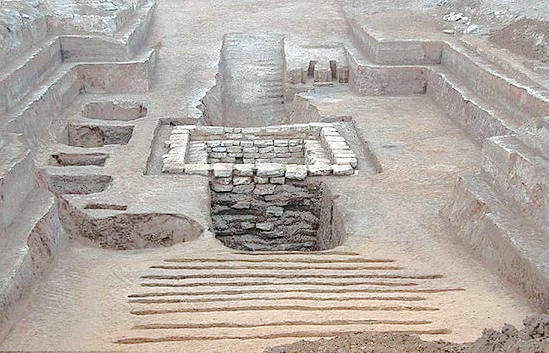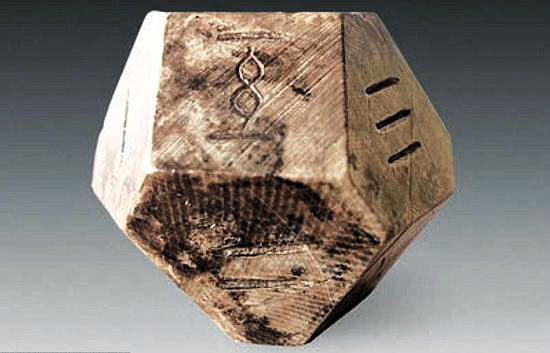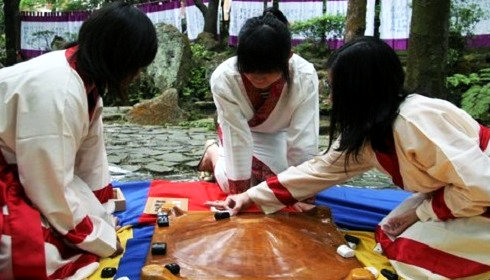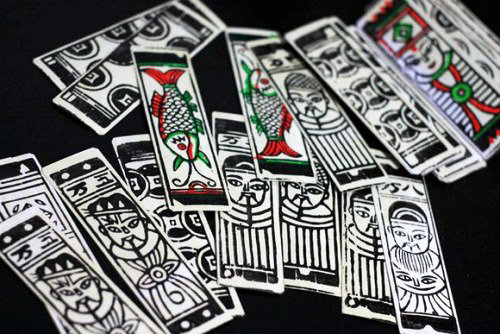
A tomb found by archaeologists which has a history of 2300 years in Shandong.[File Photo]
What did ancient Chinese do for fun? Obviously they couldn't surf the Internet or watch TV; in fact, ancient Chinese had many kinds of board and card games similar to the ones modern people play.
Liubo
Recently, archaeologists found some game pieces in a 2300-year-old tomb in Shandong. Archaeologists believe that the tomb belongs to a nobleman of Qi State (280BC-221BC). And they also found a broken chessboard, 21 numbered rectangle flags and a 14-sided dice made of animal bone. Seal characters of the numbers 1 to 6 were carved on one side of the sifter twice, while the remaining two sides are blank. After being mended and pieced together, the chessboard turned out to have two eyes carved into it, surrounded by patterns of clouds and thunder.

A 14-sided dice made of animal bone found in the 2300-year-old tomb in Shandong. [File Photo]
These game pieces seem to belong to a table game named "Liubo" in ancient China. A complete set of equipment for Liubo includes a chessboard, chess pieces and throwing sticks. In the Han Dynasty (206BC-220AD), throwing sticks were replaced by dice. The chessboard is carved with routes for chess pieces to move, and the middle part of the board is called "water" with "fish" in it. Each of the two players has six chess pieces and by throwing sticks, the game pieces are moved. The detailed rules for this game have been lost. Liubo dates back to the Shang Dynasty (BC1600–1046) and lost its popularity in the Han dynasty, being replaced by the game of Go.

Three people play Danqi. [Photo/Xinhua]
Danqi
Danqi was invented in the Han dynasty. The scholars at that time believed that sport was not a decent activity for them, and a minister invented Danqi. The middle of the chessboard for this game is bumped, like a hill, higher than the surrounding parts. The chessboard base is square and the top is round, symbolizing the "round heaven and square earth" in Chinese culture. Different rules were recorded, but in the Wei and Jin dynasty, each of the 2 players used 6 game pieces, and the number of the game pieces increased to 12 for each player in the Tang Dynasty (618-907). During the game, two players need to beat each other's pieces with their own.
Danqi was very popular in the Tang Dynasty, but later declined in popularity and was lost in the Song Dynasty (960-1279) .

Leaf game cards, which are all no bigger than a leaf. [Photo/Xinhua]
Leaf game
Although the leaf game was said to be invented by the famous General Han Xin in the Han Dynasty, records of it stretch back to the Tang dynasty. The cards for this game are no larger than a leaf, thus the name "leaf game".
The rules of this game had a large influence on bridge, and in Science and Civilization in China, Joseph Needham, a British scientist and historian, pointed out that bridge originated from China.





